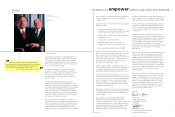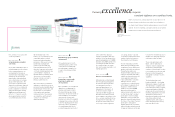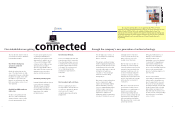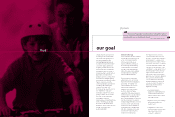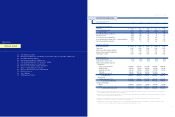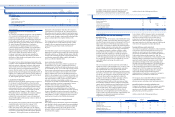Humana 1999 Annual Report Download - page 6
Download and view the complete annual report
Please find page 6 of the 1999 Humana annual report below. You can navigate through the pages in the report by either clicking on the pages listed below, or by using the keyword search tool below to find specific information within the annual report.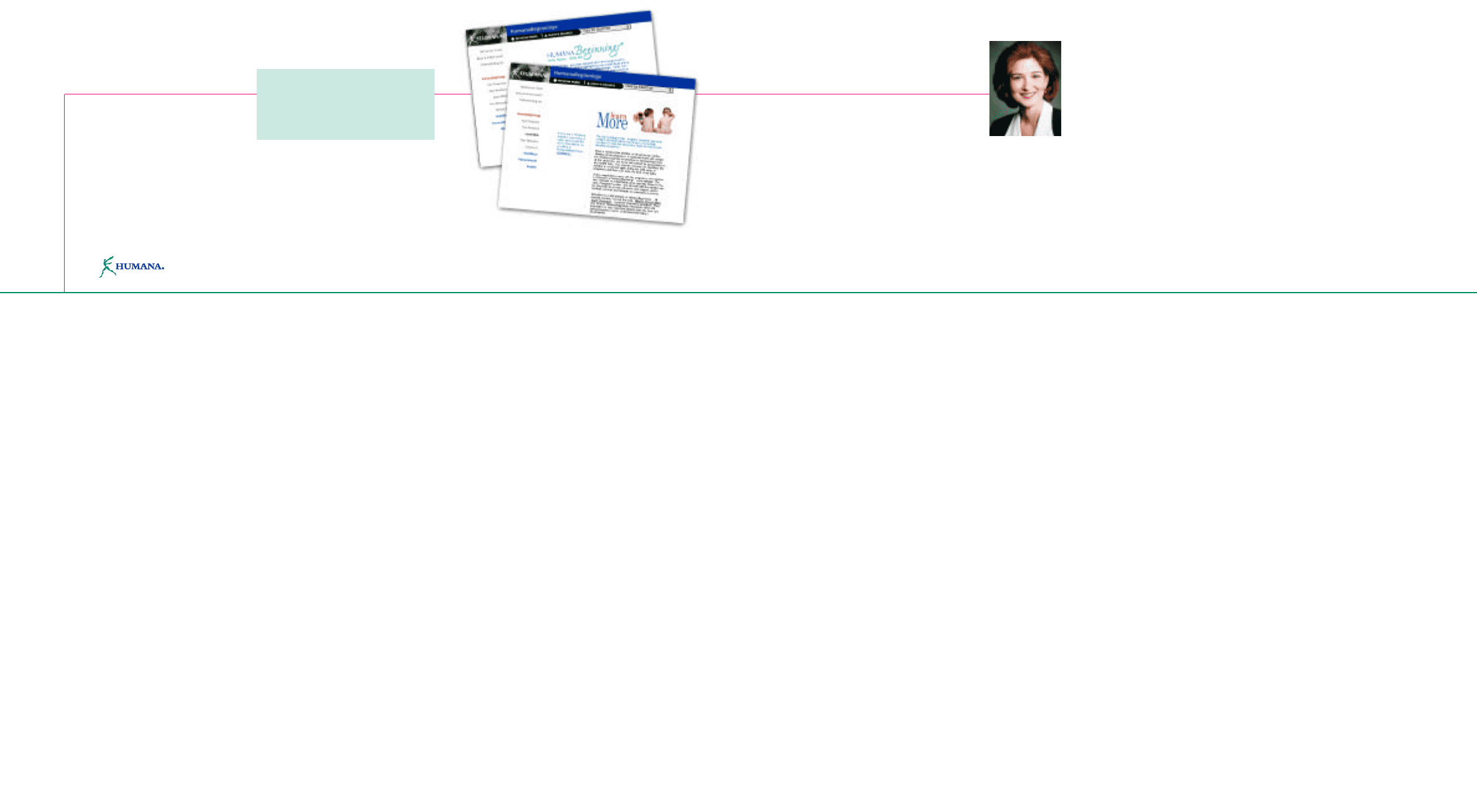
First, a review of our success with
our five key initiatives:
I N I T I A T I V E 1:
Set premiums above medical
cost trends.
We've made substantial progress in
instituting aggressive rate increases.
In the commercial business, we
accomplished this through our
excellent broker relationships on the
small-group side, and through
improving the underwriting and
service infrastructure of our large-
group commercial business. The
result is that our premium yields
during the fourth quarter improved
to 9.6 percent on our commercial
business compared to 6.7 percent
during the third quarter. January
2000 premium yields improved
further to 11.7 percent, a month
where approximately one-half of
our commercial business renews.
On the Medicare side of the
business, we concentrated our sales
in profitable markets, reduced
benefits and instituted member
premiums so that we are no longer
burdened by inadequate rate
increases from the Health Care
Financing Administration (HCFA)
that fail to keep pace with medical
cost trends. Member premiums give
us the flexibility to expand our
Medicare business in markets where
other factors, such as favorable
physician contracts, are likely to
bring us sustained success.
Our concerns about our members'
willingness to absorb the increase in
premiums have been partially allayed
by high January retention rates, and
by robust sales of new members
in the markets with significant
member premiums. The premiums
are competitive, and the benefits
continue to be richer than
traditional Medicare.
I N I T I A T I V E 2:
Build the large-group commercial
infrastructure.
We've added resources to both
underwriting and customer service
so that an area not traditionally
among Humana’s strengths is on
its way to becoming a profitable
business.
I N I T I A T I V E 3:
Renegotiate contracts with
physicians, hospitals and
other providers.
One of Humana's core strengths has
always been our advantageous
physician and hospital contracts.
We made further progress along
these lines in the last five months of
1999. In addition, we terminated
ineffective risk contracts with
physicians who lacked the capability
to manage them, and we instituted
a three-tier pharmacy benefit that is
expected to reduce our pharmacy
cost trend dramatically. We also
assumed management and control
of the former PHCS physician
network in September 1999. Now
called the ChoiceCare Network, this
powerful amalgamation of 330,000
physicians and 2,500 hospitals is the
second-largest medical network in
the country and gives us tremen-
dous sales leverage, especially in our
small-group business.
I N I T I A T I V E 4:
Improve cost management.
While physician recontracting and
three-tier pharmacy management
are central to improving medical
cost management, the key to
improving administrative cost
management is the Internet. As
an electronic business leader —
named by PC WEEK magazine last
November as the 29th most Web-
savvy company in any industry in the
U.S.— we have negotiated four key
strategic Internet relationships over
the past six months that position
us not only to achieve significant
cost savings, but also to provide
our members and physicians with a
seamless, hassle-free interface in
their interactions with Humana.
The first relationship is with The
TriZetto Group, a leading provider
of application services and business
portals for the health care industry.
This partnership will provide
Humana members, physicians and
employers nationwide with ePlan®
,
a health care Internet business self-
service application expected to
reduce administrative costs while
making it easier for our key
constituencies to conduct business
with Humana. In a phased rollout,
Humana's 5.9 million medical
members, more than 330,000
physicians and thousands of
employer groups will be given access
to ePlan®
. Using ePlan®, members
will be able to enroll in Humana
health plans, select a primary care
physician, request ID cards and view
the status of their claims. Physicians
will be able to verify patient
eligibility and benefits, view claims
status and submit specialist referrals
for approval. Employers will be able
to monitor the enrollment process to
mitigate errors and gauge employee
enthusiasm for plan offerings.
The second relationship is with
Oracle, a Silicon Valley-based
enterprise solutions company that
will provide us with packaged
software to help automate our sales
force, streamline our call center and
physician contract management,
and upgrade our human resources
capabilities.
The third relationship is with
Healtheon/WebMD — the leading
Web-based company in health care.
This relationship is a significant first
in the health care industry. Together,
Humana and Healtheon/WebMD
will provide self-service transactions,
marketing, deployment and content
development. Transactions for
physicians and members will include
claim status and benefit and
eligibility inquiries, with a goal to
reduce claim payment processing
time from days to hours.
8 9
Pursuing excellencerequires
constant vigilance on countless fronts.
Mitzi R. Krockover, M.D., a clinician and former executive director of the
Iris Cantor Women's Health Center at the UCLA School of Medicine in
Los Angeles, heads Humana's industry-leading programs in women's health.
Under Dr. Krockover's leadership, our programs in breast cancer, high-risk
pregnancy and neonatal care have achieved national distinction.
Dr. Mitzi Krockover
Women’s Health and Preventive Services
Louisville, KY
The HumanaBeginnings
Web site offers help for pregnant
women and mothers with newborns.



